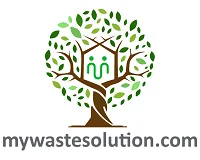With the constantly increasing energy demands with the increase of population and urbanization, conventional energy resources like coal, petroleum, natural gas, etc., are on the brink of extinction as you can see in the proportional usage of all energy types. But mostly, we are using conventional energy sources that are non-replenishable. It draws the attention of researchers. Search for renewable energy sources starts from there. Then we choose renewable energy sources for our energy requirements like wind, water, solar energy, biomass, etc.

Biomass is considered one of the most suitable and eco-friendly options for renewable energy sources. Using many thermo-chemical processes like combustion, gasification, liquefaction, hydrogenation, and pyrolysis, biomass conversion begins into various energy-yielding end products. Pyrolysis and types of the pyrolysis process are like a way to convert some of our waste to energy. If you are interested, you can also see our Waste V/s Byproduct blog. To know about biomass in detail, connect with biomass experts here.
Pyrolysis is still in the developing stage. But it receives special attention due to its quality to transform biomass directly into solid, liquid, and gaseous end products. In this blog, I’ll inform you about the types of pyrolysis processes. But, before that, I’ll also give you a rundown about pyrolysis. So, buckle up, and let’s get started.
What Does Pyrolysis Mean?
Pyrolysis is a thermal decomposition process at high temperatures in an inert atmosphere. It is considered the first step in gasification or combustion. It is different from combustion and hydrolysis as it does not involve the addition of reagents like oxygen or water.
Pyrolysis of organic materials forms volatile products and leaves char behind. Char is a solid carbon-rich residue. In this process, biomass transforms into solid (char), condensable liquid (tar), and non-condensing gases. This technique efficiently utilizes particular importance for agriculture countries with vastly available biomass by-products.
How Pyrolysis is Done

Pyrolysis is generally the heating of matter above its decomposition point in the absence of oxygen. This leads to the breakage of chemical bonds and the form of small molecules. But it can combine and form residues of larger molecular mass. Pyrolysis temperature ranges from medium (300–800°C) to high temperatures (800–1300°C). A series of reactions take place in biomass degradation by a gradual increase in temperature.
Up to 100 degrees in the water, waxes, fat, and sugar heat-sensitive substances like proteins and vitamins degrade. At temperatures between 100-500 degrees, common organic compounds like lignin, cellulose, and most sugar decompose. A non-volatile carbon-rich residue is formed, which is black and brown in color. At 200-400 degrees, if oxygen is involved, an exothermic reaction starts remaining nitrogen, sulphur, and chlorine. Arsenic, etc., are volatile in oxides. Combustion leaves the solid, powdery residue of oxidized inorganic materials. Now that you know the process of pyrolysis, you must be thinking about where it is being used. The next heading will answer your questions.
Where Pyrolysis is Used
Explore Plastic Waste Solutions
Find top machinery, plants, tools, resources, companies, and consultancy for comprehensive pyrolysis solutions.
Pyrolysis is used in many processes. Let me list out some:
Charcoal, Char, Coke, Carbon
Through this process, many types of carbon are produced that are used as fuels, structural materials, reagents, etc. Charcoal and coke are less smoky fuels. Activated carbon is used as an absorbent of chemicals. Biochar is a residue of complete pyrolysis. Biochar is used for retaining soil quality and increasing the fertility and quality of the soil.
Carbon fibers are carbon filaments that are very strong and give strong yarns and textiles. Thomas Edison used the pyrolysis carbon filament of bamboo splinters to make the bulb. Pyrolysis carbon coating has many applications, like artificial heart valves.
Biofuels ( Liquid and Gaseous)
Pyrolysis is the base method for fuel-making from biomass. Some examples are synthetic diesel, syngas, bio-oil, and some low-quality oils.
Methane pyrolysis for hydrogen
Pyrolysis is a non-polluting industrial process to produce hydrogen from methane. It is a high-volume yield, low-cost process.
Ethylene
Ethylene is produced by pyrolysis. Resulting ethylene being used to make many other polymers like PVC, Ethylene glycol (anti-freezing agent), polystyrene, and polyethylene.
Semiconductors
Semiconductors of many volatile organometallic compounds are made through pyrolysis. Some examples of semiconductors are silane, Gallium arsenide, trimethylgallium, and arsenide.

Waste management
Plastic waste and municipal waste are treated by pyrolysis. Waste reduction is the main advantage. Get plastic treatment consultation from plastic waste experts on our platform.
Thermal cleaning
Thermal cleaning is the pyrolysis process to remove the organic substance from parts, components, and products. Molten salt baths, fluidized bed systems, and burn-off ovens vacuum ovens are several types of thermal cleaning.
There are many more examples of pyrolysis. Let’s learn about the type of pyrolysis processes.
Types of Pyrolysis Processes
Struggling with plastic waste issues? Connect with top consultants specialising in plastic waste treatment solutions.
Connect NowDepending upon the process, parameters, and conditions, there are several types of pyrolysis processes. Appropriate reactors are chosen for different pyrolysis processes depending on their process.
- Fast Pyrolysis
1. (a) What is Fast Pyrolysis?
Term fast pyrolysis refers to the gradual rapid heating of biomass for a temperature range of 800–1300 °C. Rate of heating ranges between 10–200 °C for a short life span between 1-10 sec. Fast Pyrolysis is done for liquid products as it yields more liquid. The product distribution range is 60–75% biofuel liquid products, 15–20% solid biochars, and 10–20% noncondensable gaseous products.
1.(b) Reactors For Fast Pyrolysis
Different reactors are used on the basis of desired products, conditions, and biomass. Some of the most popular reactors for fast Pyrolysis are:
- Entrained flow reactor,
- Wire mesh reactor,
- Vacuum furnace reactor,
- Vortex reactor,
- Rotating reactor,
- Circulating fluidized bed reactor, etc.
Other reactors can also be used, depending upon terms and conditions. Auger-type reactors are used for both fast and slow Pyrolysis.
1. (c) Fast Pyrolysis is Used For
Fast pyrolysis is used in many areas. Some examples of fast pyrolysis are mentioned below.
- Fast pyrolysis of biomass
The most recent renewable energy source is biomass. Biomass is easily available. It can transform into a quantum of energy-yielding products. It is a safe alternative for the conservation of conventional energy sources.

- Fast pyrolysis of wood
Fast pyrolysis of wood is now quite famous for coke production as coke is considered one of the clean fuels.
- Fast pyrolysis of lignin
Plant biomass has biopolymers like cellulose, xylans, and lignin. On fast pyrolysis of lignin, a bio-oil having methoxyphenyl, phenolic aldehydes/ketones, low-molecular-weight phenols, and light oxygenates forms. This bio-oil is a good fuel.
- Fast pyrolysis of plastic waste
Pyrolysis of plastics is done to convert them into energy and bio-oil. Pyrolysis of plastic waste is performed at 300–900°C, which produces a liquid oil.
- Fast pyrolysis of bio-oils
Bio-oil is a liquid product of fast pyrolysis of biomass. It is used for chemical production. It is a high-quality hydrocarbon fuel that is tested for use in engines, turbines, and boilers. If you want to know more about waste from foodstuff, check out our blog, Biofuels from Food Waste.
Find and connect with leading companies specialising in plastic waste treatment solutions.
Get Connected Today
- Slow Pyrolysis
- (a) What is Slow Pyrolysis?
It is a conventional type of pyrolysis. It involves a long residing time and a slow heating rate. In slow pyrolysis, biomass is pyrolyzed for about 400–500 °C temperature, with a heating rate of 0.1–1 °C/s. The approximate time for slow pyrolysis ranges between 5-30 mins.
Slow pyrolysis leads to the production of solid carbonaceous char. Liquid and gaseous products are formed but in low quantities.
2.(b)Reactors For Slow Pyrolysis
Terms and conditions are applied depending on the various factors in order to use suitable reactors. Some widely known reactors for slow pyrolysis are:
- Screw/auger,
- Drum,
- Rotary kilns,
- Heinz retort,
- Tubular reactor
- Fixed bed reactor
Auger-type reactors are used for both fast and slow pyrolysis.
2. (c) Slow Pyrolysis is Used For
Slow pyrolysis is used in many fields to make solid biofuel. I’m mentioning some of the examples below:-
- Slow pyrolysis of biomass
- Slow pyrolysis of wood
- Slow pyrolysis of biochar
- Slow pyrolysis of cellulose
Slow pyrolysis of biomass mainly targets biochar (up to ∼60 wt%), together with 25-30 wt% of bio-oil and the balance as gas. Slow pyrolysis leads to a good amount of charcoal production. With controlled temperature and nitrogen ratio, results can be altered. With increasing temperature, solid, liquid, gas fuels, and oils are formed, respectively.

Difference Between Fast and Slow Pyrolysis
Qualities | Fast pyrolysis | Slow pyrolysis |
Residence time | Short upto few seconds to a minute | Long upto few minutes to hours |
Heating rate | High | Low |
Decomposition rate | Rapid decomposition | Slow decomposition |
Particle size | Small particles | Relative big particles |
Temperature | Higher | Lower |
Product | Liquid | Solid |
Typical reactors | Rotary kiln, fluidized | Fixed bed reactors |
3. (a) What is Flash Pyrolysis?
It is called very fast pyrolysis. Its reaction time is several seconds. It involves very high temperature and a very high heating rate, i.e.,>1000 °C/s. It affords a very high yield of bio-oil with very low water content. This bio-oil conversion efficiency is approx 70%.
3.(b) Reactors For Flash Pyrolysis
Due to sudden high temperatures, special reactors are made. Biomass residence time in these reactors is less. The most commonly used reactors for flash pyrolysis are:
- Entrained flow reactor and
- The fluidized bed reactor
Some newly made specialized reactors are also available in markets.
3. (c) Flash pyrolysis is used for
Generally, flash pyrolysis forms 60% biochar and 40% bio-oil and syngas. Bio-oil is the preferred product of this process. Bio-oils are extracted through several means. Some examples are:

- Flash pyrolysis of wood
- Flash pyrolysis of plastic
- Flash pyrolysis of biomass
- Flash pyrolysis of cellulose
With cellulosic biomass and wood, the organic oil yield is as high as 65–70%. The resultant liquid is acidic, stable, and easy to pour. As its production cost from wood is competitive but it is a conventional full or present time.
3.(d) Types of flash pyrolysis

Explore the Best Pyrolysis Machinery and Plants for your Industrial Needs.
Connect TodayFlash pyrolysis is of following types:
- Flash hydro-pyrolysis: This type of pyrolysis is done in the hydrogen atmosphere. 20 Mpa is the pressure at which it is carried out.
- Rapid thermal process: It is a particular heat transfer process. It has a very short heat resistance time, i.e., between 30 ms and 1.5 s. The procedure is done at a temperature between 400-9500 degree C. Feedstock rapid depolymerization and cracking takes place. Rapid heat prevents additional reactions. It gives comparable viscosity as diesel also to the product.
- Solar flash pyrolysis: flash pyrolysis can also be performed by concentrated solar radiation. Solar towers, dish connectors, solar furnaces, etc. devices are used to concentrate solar radiation.
- Vacuum flash pyrolysis: this type of flash pyrolysis is done in a vacuum. Due to vacuum, secondary decomposition reaction is inhibited, which leads to high liquid yield and low gas yield.
Due to the vacuum, condensable products are removed from the hot reaction. That prevents further cracking and re-condensation reactions.
Manage your waste with experts. Find consultants for –
- Waste Buying and Selling options
- Waste Treatment and Disposal
- Waste related Compliance and Regulations
Browse Consultants Now

4. Catalytic Biomass Pyrolysis
4. (a) What is Catalytic Pyrolysis?
From the literature, it can be depictured that liquid obtained from different pyrolysis processes cannot be used directly as biofuel. Due to high oxygen and water content, it needs upgrading. Catalytic biomass pyrolysis is performed to improve the quality of bio-oil.
This procedure involves the use of catalysts to improve the quality of bio-oil. Pre upgradation techniques like condensation and re-evaporation are not needed for this oil. So it can be used as transportation oil or altered its quality to meet several demands.

4.(b) Catalyst used
Various catalysts are used in this process. The use of a catalyst depends upon the product, procedure, and biomass used. Mainly zeolites and basic materials are used as catalysts.
Struggling with plastic waste buying and selling issues? Connect with plastic waste buyers and sellers here.
Buyer Listings Seller ListingsConclusion
It is necessary to find ways that can change biomass into useful energy sources. We have to think primarily about liquid fuel because diesel and petroleum are on the verge of extinction. Thermochemical processes are one of the best alternatives as they are eco-friendly and suitable for achieving desirable requirements. Pyrolysis receives major attention because it produces the best quality product.
It can be depicted by the literature and my blog that slow pyrolysis yields good-quality char. Fast and flash-yield liquid oil to use as fuel. Catalytic biomass pyrolysis is an option to improve the quality of products. It can also be applied to gaseous products to improve their quantity and quality. Researchers also mention that it is a good alternative for waste to energy. Energy from biomass can be very beneficial for developing countries like India. For more detailed information regarding pyrolysis processes, connect with pyrolysis consultants on our platform.
Like and comment, please I love when you respond. For more informational blogs, subscribe to us and visit our site at least once because it matters a lot to us. Thank you.















